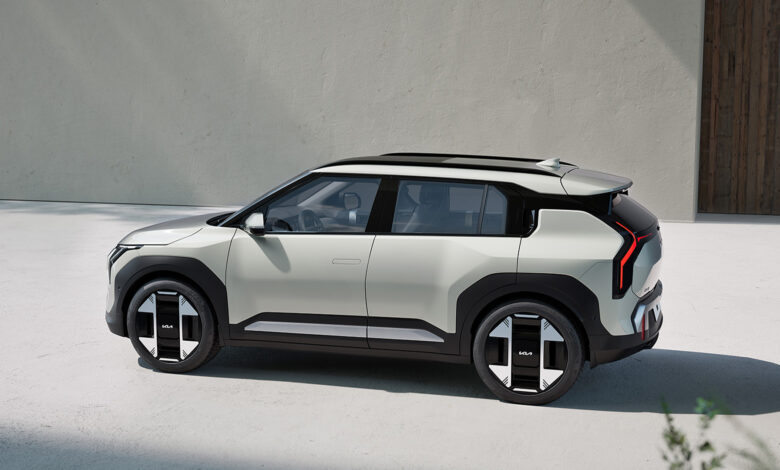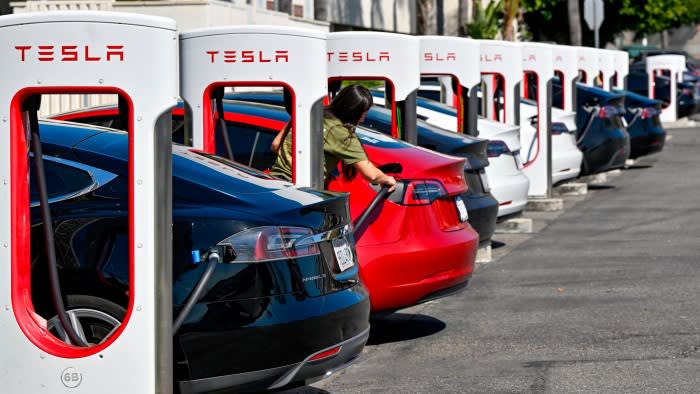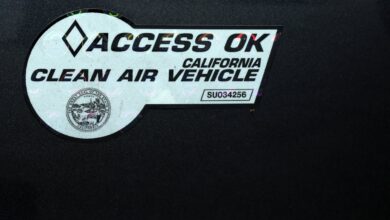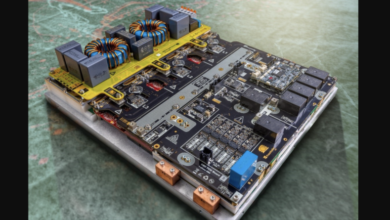Kia unveils images of new low-cost EV with range of 350 miles

KIA has unveiled the first images of its brand-new electric vehicle – the 2026 EV3.
The EV, which could debut in the US as early as next year, will feature a smaller interior but might remind car enthusiasts of the much larger EV9.
A base model along with a GT-Line version will be available to consumers, reports Car and Driver.
Kia‘s brand-new car will boast an 81.4-kWh battery and 350 miles of range.
It’s also expected to be available in nine different colors for the body and four earthy hues: Aventurine Green, Shale Grey, Frost Blue, and Terracotta.
According to Car and Driver, the vehicle’s GT-Line is slated to all-wheel drive while the standard EV3 is front-wheel drive.
Kia has stayed quiet on most of the features of the car, however, it was also noted that the vehicle will come equipped with an Artificial Intelligence navigation system.
The car manufacturer has boasted that the car had the ability to charge from 10 to 80 percent in half an hour.
Kia is currently eyeing a $30,000 to $50,000 price range.
Many potential buyers rushed to share their excitement over the news online.
“This is the kind of EV I could see buying,” one person wrote.
“Stylish, just large enough, smartly packaged, good range, perfect for my dense urban neighborhood. If Kia can deliver on a $30k base price for a decently equipment version that is actually available, they will have a hit.”
“This is what lots of buyers want,” a second person quipped.
One thing I see Kia doing here that other makers will be watching: installing a large HV battery in a small car to give it the range buyers ‘think’ they must have.”
Why aren’t people buying EVs?
As January, many EV makers reported slow demand. Rueters said there are a few valid reasons for a slow in demand:
- High initial costs. Many automakers, like Tesla, Hyundai, and Ford have conducted “price slashes” on their flagship EVs to attract new buyers, though demand remains slow.
- Higher insurance costs. Some insurance companies cite fire risks, high costs of battery replacement, and higher vehicle weight as reasons for higher premiums.
- Charging anxiety. A large percentage of people remain fearful of being in a situation where they won’t be able to charge if they run out of battery due to a lack of infrastructure.
- Range anxiety. In many instances, EVs still don’t have the range and infrastructure of gas-powered vehicles.
- Poor performance in extreme temperatures. Reduced range in extremely hot or cold weather makes potential buyers wary.
Source: Reuters
Others, however, had questions.
“I dislike the trend of creating range just by stuffing larger capacity batteries,” one person wrote on Facebook.
“It increases weight, charge time, cost, and reduces handling. Would rather they make it efficient first.”
Someone else expressed concern over the charge capabilities, adding, “This is just the eNiro replacement, and unfortunately, it’s not on the 800v system which helps charge speed and cold weather range significantly.”
The news of Kia’s new EV comes days after Renault and Volkswagen parted ways in developing their own electric vehicle.
The two companies reportedly “did not succeed in finding an agreement,” a source told Reuters.
A second insider claimed that the pair were very close to signing an agreement but it fell to shambles when Volkswagen declared its intention to develop the car on its own.
Had the deal been signed, the energy-efficient car would have hit the market in 2026 — around the same time Kia’s car is set to hit the market.
“We are currently examining various options to expand our product portfolio in the area of even more affordable fully electric entry-level mobility,” Pietro Zollino, Volkswagen’s head of corporate communication, told The U.S. Sun.
Volkswagen’s departure from the talks was reportedly a massive blow to Renault CEO Luca de Meo, who hoped for a greater sense of camaraderie between European and Chinese carmakers.



